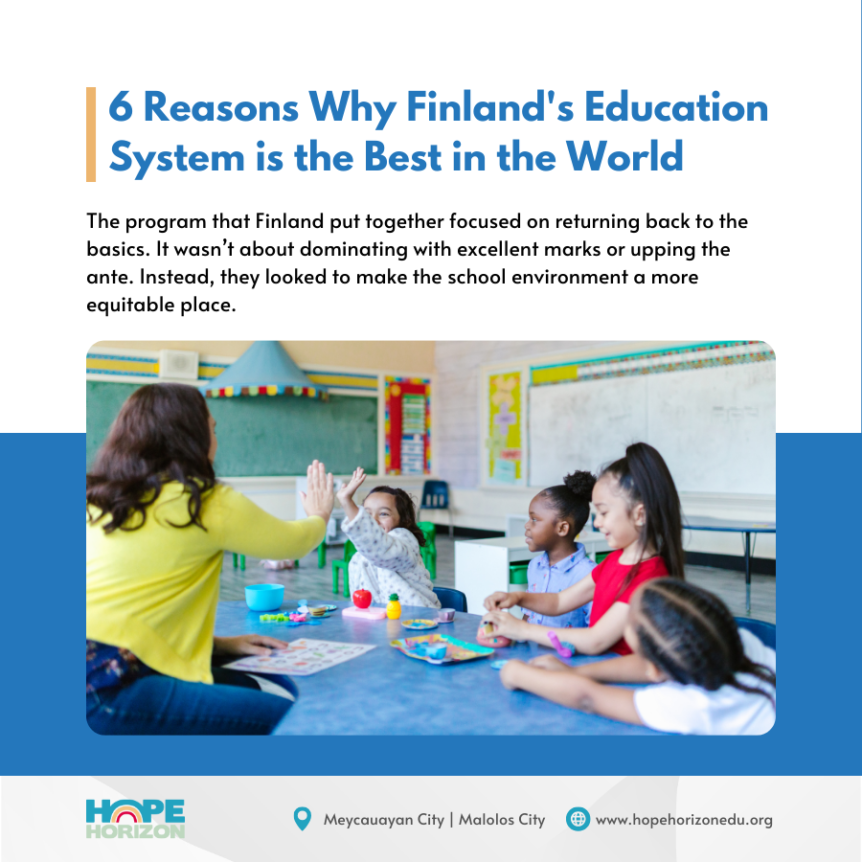The program that Finland put together focused on returning back to the basics. It wasn’t about dominating with excellent marks or upping the ante. Instead, they looked to make the school environment a more equitable place.
Since the 1980s, Finnish educators have focused on making these basics a priority:
- Education should be an instrument to balance out social inequality.
- All students receive free school meals.
- Ease of access to health care.
- Psychological counseling
- Individualised guidance
Beginning with the individual in a collective environment of equality is Finland’s way.
Finland’s approach to student assessment differs significantly from many other countries in several key ways:
- Minimal standardized testing. There are no compulsory national tests for students in basic education in Finland. Teachers have the autonomy to decide what types of tests to use in their classrooms.
- Focus on formative assessment. The Finnish education system places a strong emphasis on formative assessment, also known as assessment for learning. Teachers use methods like observation, self-assessment, peer evaluation, and feedback-driven discussions to gather information about students’ progress throughout the learning process.
- Qualitative feedback over grades. In Finnish schools, the focus is on providing meaningful, individualized feedback to students rather than assigning grades. Teachers give qualitative feedback that highlights strengths, areas for improvement, and specific steps for enhancing learning.
- Holistic assessment. Finnish schools take a holistic approach, considering not only academic achievements but also students’ social and emotional development. They value skills like critical thinking, creativity, collaboration, and problem-solving alongside subject-specific knowledge.
- Decentralized assessment. Teachers are responsible for student assessment based on curriculum objectives. Schools and teachers have substantial autonomy to design curriculum and teaching methods to meet their students’ needs.
- Delayed high-stakes testing. The first national exam is the matriculation exam at the end of general upper secondary school, when students are 18-19 years old. This exam determines eligibility for university admission.
While Finland’s students perform very well on international assessments like PISA, the country’s approach to assessment is fundamentally different from the exam-focused, standardized testing cultures found in many other education systems. Finland’s emphasis on formative assessment, qualitative feedback, and teacher autonomy aims to support student learning and well-being rather than simply rank and sort students based on test scores.
Sources:
- https://www.weforum.org/agenda/2018/09/10-reasons-why-finlands-education-system-is-the-best-in-the-world/
- https://rossier.usc.edu/news-insights/news/finnish-lessons-revisited-what-we-learned-about-one-best-education-systems-world
- https://www.ccefinland.org/introductiontofinlandeducation

